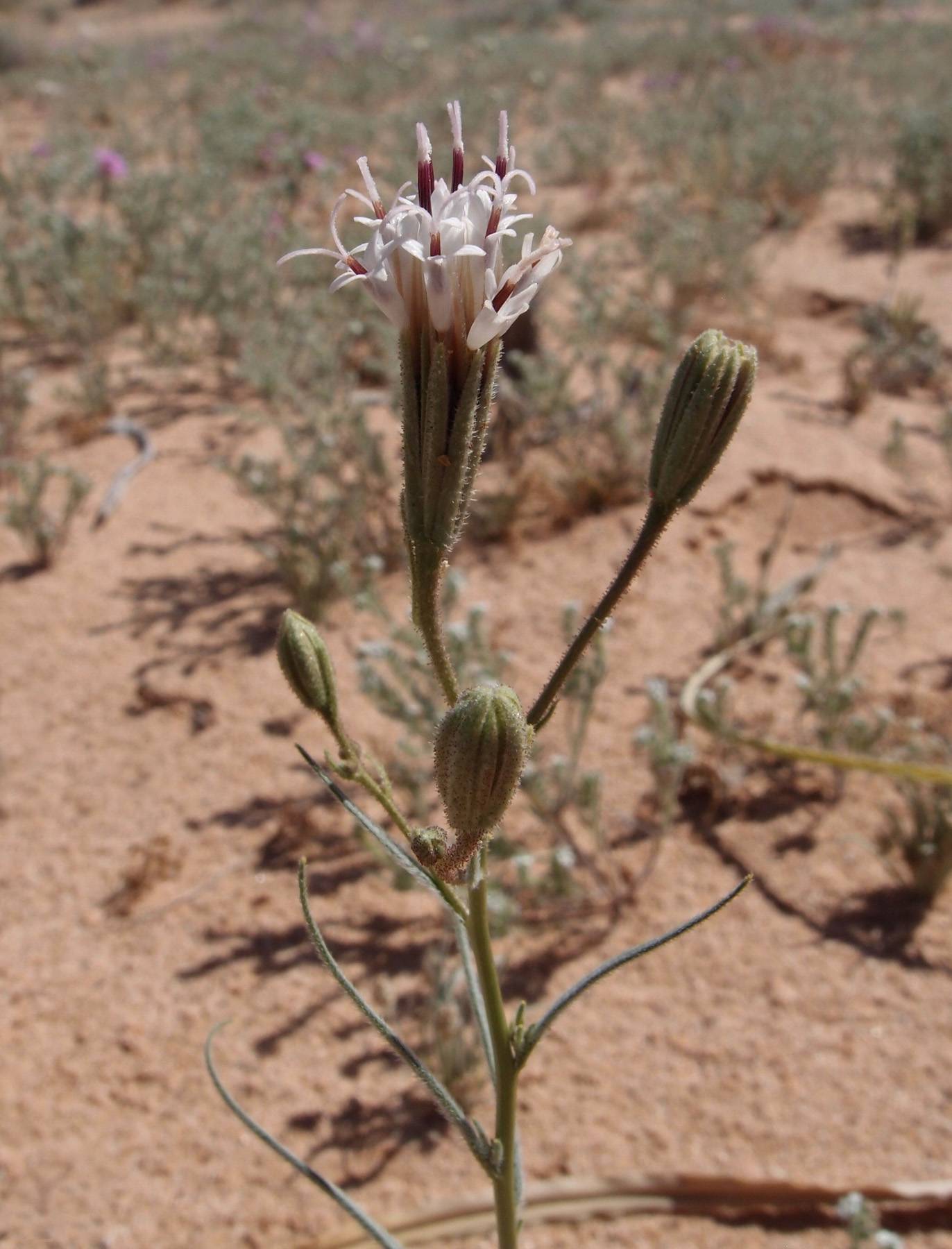
|
Family: Asteraceae |
Annuals or perennials, 10-80(-150+) cm. Stems erect, branched (mostly distally). Leaves cauline; opposite (proximal) or alternate (mostly); petiolate or sessile; blades (1- or 3-nerved) broadly lanceolate to linear, margins entire, faces sparsely to moderately scabrellous to strigillose or appressed-puberulent (hairs 0.1-0.8+ mm), not gland-dotted. Heads radiate, discoid, disciform, or radiant, in ± corymbiform arrays. Involucres narrowly cylindric or turbinate to hemispheric, 3-15+ mm diam. Phyllaries persistent or falling (in fruit), 8-14 in 2-3 series (erect in flowering, reflexed in fruit, purplish, or whitish, linear to oblanceolate, subequal or unequal, herbaceous to membranous). Ray florets 0, or 3-13, pistillate, fertile; corollas white or pinkish to purplish. Disc florets 12-40(-90), bisexual, fertile; corollas pinkish to purplish or whitish (glabrous or sparsely hairy, sometimes stipitate-glandular), tubes shorter than cylindric throats or much longer than short, broadly funnelform throats, lobes 5, lance-linear or linear (equal or unequal). Receptacles flat, pitted or knobby, epaleate. Cypselae obpyramidal, 4-angled, densely to sparsely hairy (hairs straight); pappi usually persistent, of 4-10 rotund and callous-thickened, or spatulate to subulate, medially thickened, laterally scarious scales in 1-2 series (all, some, or none aristate, all alike or pappi of outer cypselae shorter, rarely 0). x = 12. Circumscriptions of species adopted here closely follow those of B. L. Turner and M. I. Morris (1976). Some of their circumscriptions, especially those of Palafoxia callosa, P. rosea, and P. texana, merit reconsideration and possibly different interpretations. Their infraspecific taxa are not formally recognized here.
|
This project was made possible in part by the Institute of Museum and Library Services [MG-70-19-0057-19].
Powered by Symbiota



